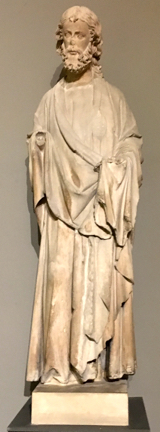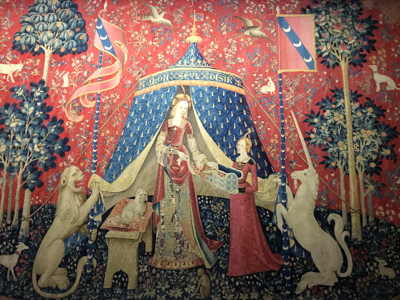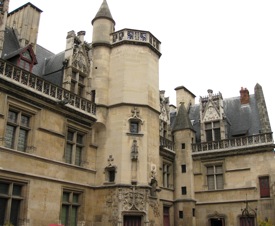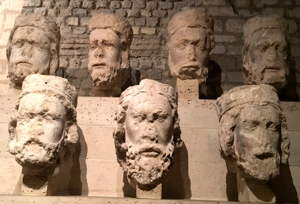 |
Musée de Cluny, Paris, France | |
| Paris's Museum of the Middle Ages houses a wealth of tapestries, stained glass, sculpture, and religious arts. | ||
|
|
|
If you like medieval art, don't miss the Musée National du Moyen Age/Thermes de Cluny known more commonly as the Musée de Cluny, on the Left Bank right in the heart of Paris's Latin Quarter (map). The gothic house, home of a medieval bishop, was built in the 1400s atop partially ruined Roman baths dating from about 200 AD. The ruined Roman baths are still open for visits. In the early 1500s it became the home of Mary Tudor, daughter of King Henry VII of England and Elizabeth of York. In 1833, Alexandre du Sommerard moved in, bringing with him his medieval art, and amplifying the collection until his death in 1842. The City of Paris, recognizing the value of the building and the collection ensemble, purchased both and opened the Cluny as a museum. Gilded church altars, sculpted wood and stone, brilliant stained glass, and rich tapestries fill the galleries. Much of the art is based on religious themes. Perhaps the most famous works are the tapestries of The Lady and the Unicorn, displayed in a special room with low light. These six large tapestries (some as big as 3.6 X4.6 meters, or 12X15 feet)were woven in Flanders in the 1500s. They are some of the oldest and most important tapestries in the world. In 2012-2013 they underwent extensive cleaning, and the colors are more vivid than ever. Each panel depicts a blond woman in a Mediterranean garden, with a lion to one side and a unicorn to the other, as well as several other smaller animals. Some historians believe they are allegories of the five senses: touch, taste, smell, hearing, and sight. The sixth tapestry bears the caption, "A mon seul désir," or "To my only desire" which some think represents the heart.
At the Cluny one can also admire stained glass windows from the Sainte-Chapelle and the "severed heads" (stone sculptures) of the Gallery of Kings, taken from Notre Dame Cathedral during the Revolution. The heads were rediscovered in 1977 and given to the Cluny. For kids interested in the age of "Knights in Shining Armor," this museum can be a treat, though much of the religious artwork may not interest the young ones. (Here's more on what to do with children in Paris.) The gift shop has a collection of miniature tapestries, english books and medieval-themed books and toys for children. Note: From 2015 to 2020, the Cluny is undergoing some restoration work. The museum remains open throughout, though some individual rooms may be closed for periods of time and the entrance is being redone. Paris Museum Pass accepted. Closed Tuesday. Métro: Cluny-La
Sorbonne, St-Michel or Odéon Musée
National du Moyen Age/Thermes de Cluny
|
|
Above, Cluny
Museum, Paris.
|




